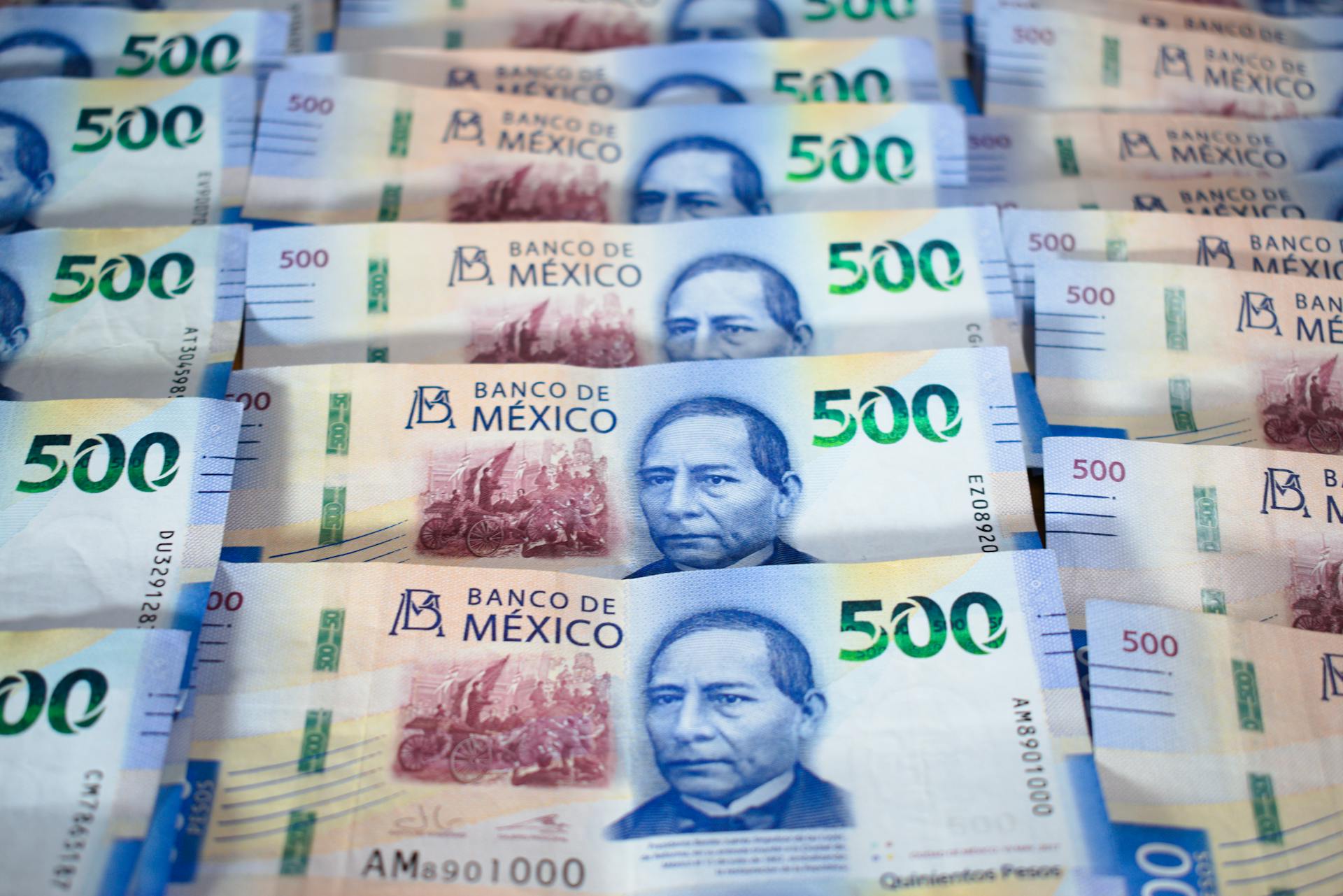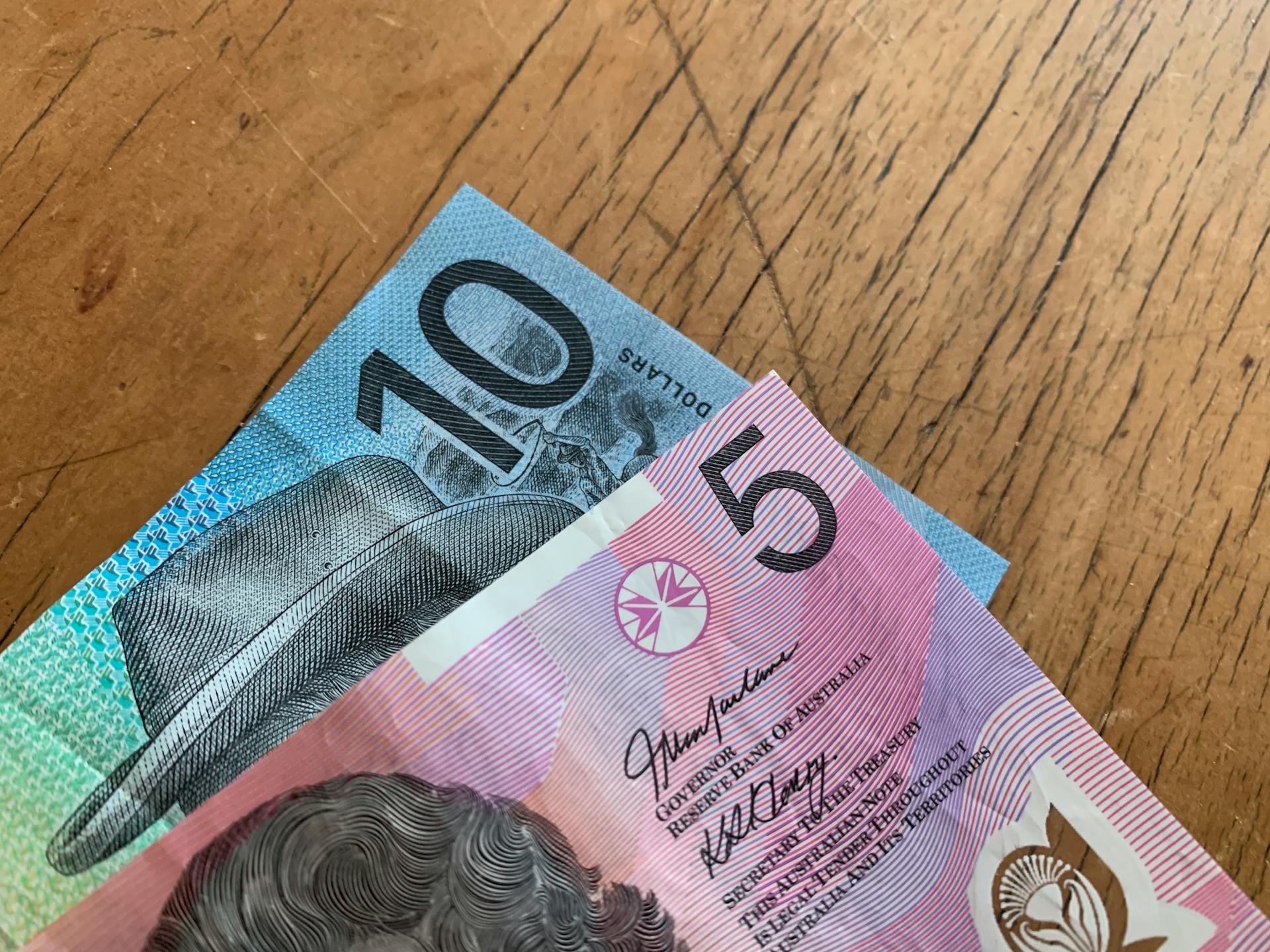
Bank statements can be overwhelming, especially with all the abbreviations scattered throughout. This is why it's essential to understand what each abbreviation means.
Many bank statements use the abbreviation "NSF" to indicate when a payment has been returned due to insufficient funds. This can happen when you don't have enough money in your account to cover a transaction.
Some common abbreviations on bank statements include "DEP" for deposit, "WD" for withdrawal, and "FEE" for fees charged by the bank. It's crucial to review your statement regularly to stay on top of your finances.
By breaking down these abbreviations, you can make sense of your bank statements and avoid any confusion or unexpected charges.
A fresh viewpoint: Saudi Riyal Abbreviation
Understanding Abbreviations
Your bank statement can be a treasure trove of information, but it's easy to get lost in a sea of abbreviations.
Understanding abbreviations on your bank statement is crucial to staying on top of your finances. You can find a list of common abbreviations in your bank statement, including APR, which stands for Annual Percentage Rate of an account over a year.
APR is a key metric to understand when it comes to interest rates and loan terms. It's essential to know what you're paying in interest over a year.
Automated teller machine transactions are identified by the abbreviation ATM. You'll see this abbreviation on your statement if you've made a withdrawal or deposit using an ATM.
ATM refunds are denoted by ATM RFD. This is a good thing to look out for, as it means you're getting your money back.
Bankers Automated Clearing Services, or BAC or BACS, is a way to make payments directly from one account to another. This is a convenient feature, but make sure you understand the fees associated with it.
Bill payments are identified by the abbreviation BBP or BP. You'll see this if you've paid a bill using your bank account.
Cash Deposit Machine transactions are denoted by CDM. This is a great way to deposit cash into your account, but be aware of any fees associated with it.
Charge-related transactions are identified by the abbreviation CHG. This can be a sign of a problem with your account, so be sure to investigate.
Explore further: Ally Bank Fees
Transactions made using a paper cheque are denoted by CHQ. This is an old-fashioned way of paying bills, but it's still a valid option.
Transaction error corrections are identified by the abbreviation COR. This is a good thing to look out for, as it means your bank is taking steps to fix any errors.
Credits added to your account are denoted by CRE. This is a welcome addition to your account balance!
Cash deposited into your account is identified by the abbreviation CSH. This is a great way to add funds to your account, but be aware of any fees associated with it.
Failed checks are denoted by CUI. This is a sign of a problem with your account, so be sure to investigate.
Department for Work and Pensions transactions are identified by the abbreviation DWT. This is a specific type of transaction, so be aware of any fees associated with it.
Individual Savings Accounts are denoted by ISA. This is a type of savings account that's designed to help you save for the future.
International transfers are identified by the abbreviation ITL. This is a convenient way to send money abroad, but be aware of any fees associated with it.
Online banking transactions are denoted by OTR. This is a great way to manage your account from the comfort of your own home.
Point of sale/debit card transactions are identified by the abbreviation POS. This is a common type of transaction, so be aware of any fees associated with it.
Debits returned to your account are denoted by REV. This is a welcome addition to your account balance!
Salary paid transactions are identified by the abbreviation SAL. This is a regular payment that's deposited into your account.
Regularly scheduled payments are denoted by S/O or STO. This is a great way to set up automatic payments for bills and subscriptions.
Screen-based transactions are identified by the abbreviation SBT. This is a type of transaction that's processed on your behalf by your bank.
Telephone banking transactions are denoted by TEL. This is a convenient way to manage your account from the comfort of your own home.
A unique perspective: Bank Statements for Mortgage
Transfer of funds between accounts is identified by the abbreviation TFR. This is a great way to move money between accounts, but be aware of any fees associated with it.
Teller transactions are denoted by TLR. This is an old-fashioned way of conducting transactions, but it's still a valid option.
Common Abbreviations on Bank Statements
You'll often come across abbreviations on your bank statement that may leave you scratching your head. Don't worry, it's normal!
One common abbreviation you might see is POS, which stands for payments made using your debit card. This is a pretty straightforward one.
FPI is another abbreviation you might encounter, and it refers to Faster Payments Inwards, meaning you've received money from another account using the Faster Payment electronic system.
A different take: One of the Objectives of Reconciling Bank Statements Is
List of Common Abbreviations
You'll often come across unfamiliar abbreviations on your bank statement, but don't worry, they're usually easy to decipher.
The abbreviation "AMEX EPAYMENT ACH PMT" refers to an ACH payment made via the American Express ACH Payment Service.
Discover more: Payment Check Meaning
If you see "POS" on your statement, it simply means payments were made using your debit card.
It's worth noting that some abbreviations, like "No account or overdraft fees. No minimum balance", indicate that you're not being charged for certain services.
"ACH PMT" is another common abbreviation that stands for an Automated Clearing House payment.
The meaning of abbreviations may vary depending on the context and the recipient, so it's always a good idea to review your statement carefully.
You might also see "amex epayment ach pmt" on your statement, which means the same thing as the previous explanation.
Related reading: What Has a Bank with No Money?
FPI
FPI stands for Faster Payments Inwards, which means you've received money from another account using the Faster Payment electronic system.
You'll typically see this abbreviation on your bank statement when you've received a payment from someone else.
A different take: Post Payment Meaning
Checking and Savings Abbreviations
Checking and Savings Abbreviations are a common sight on bank statements. ACH stands for Automated Clearing House, which is used for electronic transactions.
Some common checking abbreviations include NSF, which stands for Non-Sufficient Funds, and OD, which is an Overdraft. These terms often appear when you've overdrawn your account or tried to make a transaction that can't be completed.
On the other hand, savings abbreviations like IRA (Individual Retirement Account) and CD (Certificate of Deposit) are often used for specific types of accounts.
Chk
CHK is an abbreviation you may see on your bank statement when a check is deposited and/or clears. It signifies a check transaction.
Occasionally, you might see this abbreviation as CHQ, especially if your financial institution prefers the spelling of “cheque” to “check.” CHQ is just a variation of CHK.
If you're interested in learning more about writing checks, there's a recommended article that can help you with that.
For another approach, see: How to Buy a Bank Check
Od
OD stands for overdraft, which means your balance has dipped into negative territory.
If you see your balance expressed with a minus sign, it's likely because your account is accruing overdraft fees, so it's a good idea to get your account back to positive as soon as you can.
International Abbreviations
If you see the abbreviation INT'L on your bank statement, it means you've made a foreign transaction. This can occur when you use your card abroad or purchase an item from overseas.
Many banks slap fees and charges on these types of transactions, so it's essential to read your account's specific terms and conditions before making any purchases overseas.
Int
The "Int" abbreviation is a common one you might see on your bank statement. It stands for interest that is credited to your account.
If you have a checking or savings account that pays interest, you'll likely see this abbreviation on your statement. The interest is paid based on the total amount on deposit.
You might be wondering how often the interest is paid. In some cases, it's paid monthly, while in others, it's paid quarterly or annually.
America
Bank of America bank statements have a unique system of tags that make it easier to understand entries. The tags DES:, INDN:, and CO ID: correspond to the ACH "Company Entry Description", "Receiving Individual Name", and "Company Identification" respectively.
If you're a Bank of America customer, you'll notice these tags on your statements, which can help you quickly identify the purpose of each transaction.
International
If you see the abbreviation INT'L on your bank statement, it means you've made a foreign transaction.
This can occur when you use your card abroad or purchase an item from overseas while in Britain.
Many banks slap fees and charges on foreign transactions, so it's essential to read your account's specific terms and conditions before splashing out overseas.
The contactless card spending limit is rising to £100 in October.
If this caught your attention, see: Axis Bank Credit Card Statement
Tips and Importance
Knowing bank statement abbreviations is crucial for staying on top of your finances. Regularly reviewing your bank statements can help you catch unexpected or fraudulent transactions.
It's essential to recognize transactions on your statement as ones you initiated and authorized. If you see a transaction you don't recognize, contact your bank's customer service department.
Understanding abbreviations helps you clearly grasp the meaning of transactions on your account. Terms like ATM, ACH, and OD can be confusing, but recognizing them makes it easier to do proper bank statement analysis.
Knowledge of common abbreviations and codes makes the task of categorizing bank transactions much simpler. Acronyms like ATM, POS, ACH, and INT clearly identify cash withdrawals, debit card payments, transfer funds, and earned interest.
Familiarity with bank terminology saves time and avoids confusion. It also enables you to communicate more effectively with your financial institution when asking questions or resolving issues.
Banks use abbreviations to save space on account statements, increasing efficiency and meeting industry-wide standards. They also help banks comply with technical requirements and systemic rules.
Here are some common bank statement abbreviations to get you started:
Understanding these abbreviations can make a big difference in your financial management. By being familiar with them, you'll be better equipped to track your account activity, catch discrepancies, and stay informed about every debit, credit, and fee affecting your account.
Frequently Asked Questions
Is trx short for transaction?
Yes, "Trx" is a shorthand for "transaction". This abbreviation is commonly used in financial and accounting contexts to refer to a transaction number.
Sources
- https://www.moderntreasury.com/journal/bank-statements-descriptors-and-how-do-you-change-them
- https://www.docuclipper.com/blog/bank-statement-abbreviations/
- https://www.falconnational.com/blog/post/deciphering-the-abbreviations-and-terms-on-your-bank-statements
- https://www.sofi.com/learn/content/bank-statement-abbreviations-meaning/
- https://www.thisismoney.co.uk/money/saving/article-9947173/20-bank-statement-abbreviations-explained-simple-terms.html
Featured Images: pexels.com


